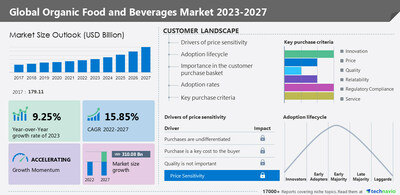These tiny bright green specks are tomorrow’s superfood.
They’re high in protein and phytonutrients – which boost the immune system. And they contain more iron than spinach, and more zinc than broccoli or kale.
In Thailand they’re known as khai-nam – “eggs of the water” – and have traditionally been grown as a cheap and extremely quick source of food.
But GreenOnyx, a startup in Tel Aviv, is now cultivating the crop – also known as rootless duckweed, water lentils or wolffia arrhiza – in a super hi-tech sterile “urban farm” on the fifth floor of a Tel Aviv warehouse, where conditions are controlled by sensors and AI for maximum yield and quality.

Wolffia is the world’s fastest-growing vegetable, doubling its size in just two days, and staying fresh for six weeks. It’s almost the world’s smallest vegetable, measuring just 1mm in diameter.
GreenOnyx has, for obvious reasons, rebranded the crop. It’s now known as Wanna Greens, and it’s an easy addition to any dish. It needs no washing, no peeling or chopping – each tiny ball is the full vegetable – and no cooking.
“It tastes very mild, very gentle, with a texture that’s something like caviar,” says Ben Kidron, the company’s chief revenue officer. “You can cook it if you want but you will lose some of the benefits. It’s best eaten raw.”
Wolffia grows naturally on ponds in Thailand, Laos and Myanmar, in south east Asia, where it has to be washed in warm water, then boiled, losing much of its goodness. It has also been found growing in the Golan Heights, northern Israel.
GreenOnyx has started selling it online in ice cream-type tubs at $6.40 for 200g and aims to expand production to supply supermarkets in the near future.
The company’s wish was for a plant that could be grown autonomously using minimal resources, that would have – and maintain – high levels of nutrition, and that could be produced in sterile conditions with zero waste.
Tsipi Shoham, Co-founder and CEO, went searching, and found exactly what they were looking for – one of the 200 species of Wolffia.
“My professional background in cancer research led to the recognition of the importance of wholesome fresh greens to promote cellular strength, prevent illness and disease, and promote longevity,” she said.
“I founded GreenOnyx in 2013 and changed my mission from oncology research to creating a breakthrough in the delivery and consumption of fresh greens.
“And so I began a journey of discovery and passion, to realize my vision of making wholesome, fresh, vital greens a staple of everyone’s diet.”
The result is a “new” vegetable that’s already causing excitement in some of the finest restaurants, and could be sent into space to feed astronauts.
Patel & Chabot, the leading French restaurant, has been cooking with it, as have a number of Michelin-starred restaurants, and Ruti Broudo, queen of Tel Aviv’s culinary kingdom.
Sign up for our free weekly newsletter
And GreenOnyx has built a miniature farming machine to be tested in space. “This is what NASA called the future vegetable,” says Kidron.
“They know their people must consume fresh vegetables but they don’t have any solution in the space stations or on Mars.”
“You need 80 grams of fresh leafy greens per day, that’s the minimum required by officials in many countries just to keep your health in good condition. You just need it, astronauts need it and that’s why NASA is talking with us.”
The new farm, which was officially opened last week, can produce 38 tons a year. “What you see here is the most efficient agricultural farm system ever created.”
Seeds are planted in trays of water inside the breeding machines at a constant 24ºC, and the first harvest is ready in just two days. There are no other ingredients in the process – no pesticides, antibiotics, or other toxins – just seeds plus a small amount of water.
The machines will work anywhere, yield 100 times more per square meter than field farming, and produce greens with a six-week fridge life, the longest of any fresh vegetable.
“That’s a bit more than the average yogurt, so you can put it as a topping and sell the two together,” says Kidron.
“We are here to transform everyone’s diet by introducing the next generation of fresh greens, that are more accessible, fresher, better.
“Research shows that fresh dark leafy greens are the healthiest food, providing the highest nutrition per calorie, with the strongest protection against chronic and infectious diseases, yet 90 percent of consumers don’t eat even the minimum recommended portion.
“Sugar and fat are just more accessible than greens. We are here to change this.”
The company has a retail agreement in Europe, and is discussing a long-term strategic partnership with a leading agriculture grower and a food company in the US.
So what’s to stop anyone else cashing in? “It takes about six years to get to where we are, so we have a headstart,” says Kidron.
“Our competitive edge is the six-year biological cycle you need to invest in to find a way to grow a crop.
“It takes time, you make mistakes, you make predictions, you get results, you need to go back to the table to re-draw your plans.
“It takes that long to figure out what to do, if you have the right people. A big budget won’t solve it.”
This content was originally published here.





















